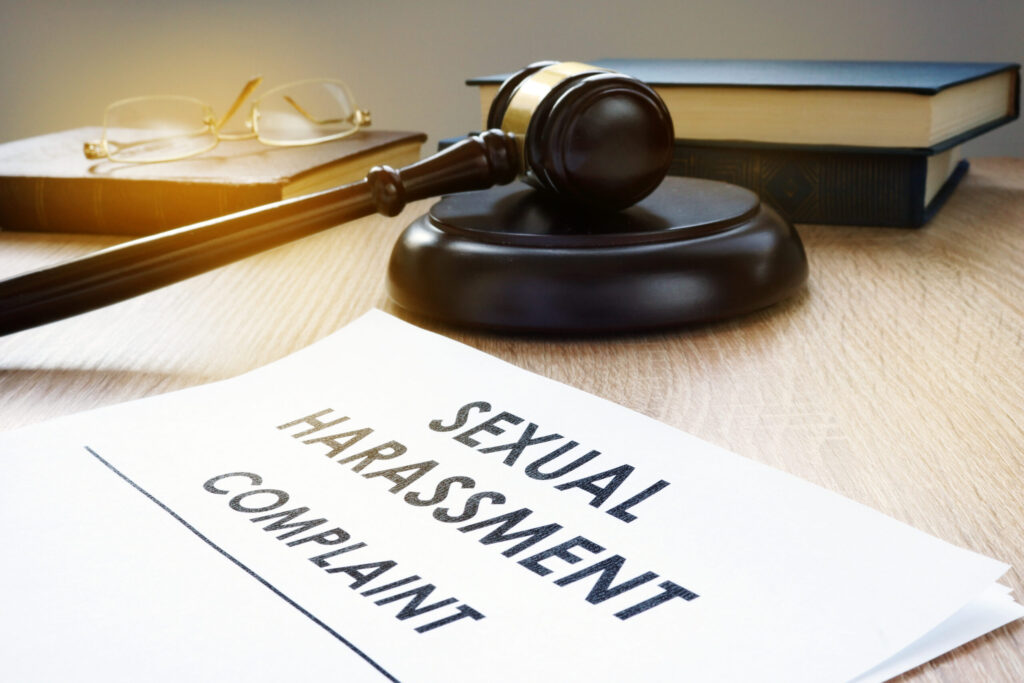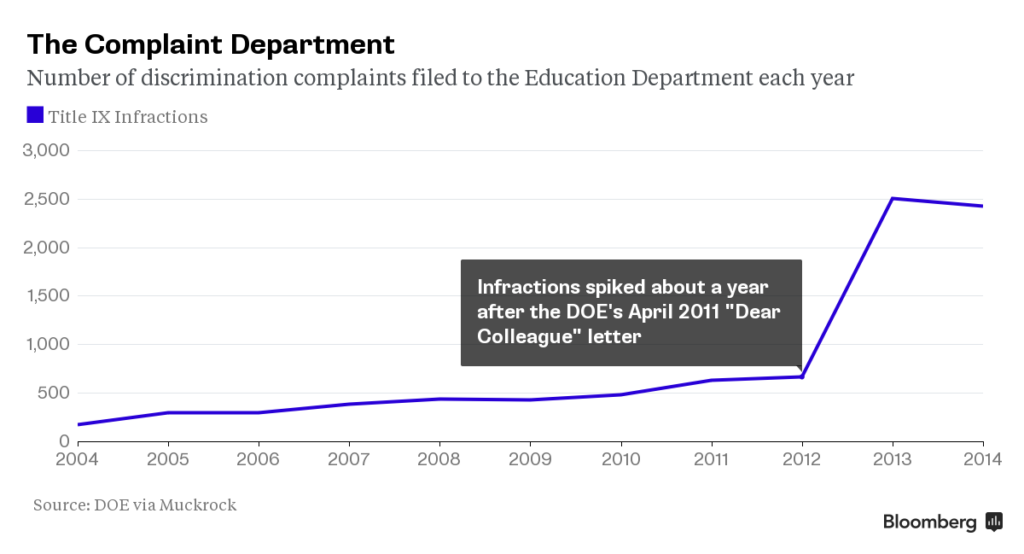Sexual misconduct, discrimination, harassment and violence are among the most serious allegations of wrongdoing reported in the workplace. Reports of these acts must always be taken seriously by employers, especially human resources and employee relations staff. The consequences of delaying or avoiding action in these situations, such as costly lawsuits and reputational damage, can be devastating for an organization.
It’s important to focus on a strong employee relations strategy that can promote healthy employee relationships within the workplace while clearly outlining best practices and standards that need to be adhered to. Ensuring employees know their rights and responsibilities is not only important to productivity but to the prevention of issues that could lead to Title IX investigations.
Most businesses’ employee handbooks have procedures outlined to cover these types of misconduct. But at any U.S. university or organization that receives federal funding, investigations have to adhere to the standards set out by Title IX.
Using Title IX to Handle Sexual Discrimination in the Workplace
Title IX was passed in 1972 as part of the Education Amendments. It contains a number of stipulations but is principally known for prohibiting discrimination on the basis of sex in any federally funded education program or activity. The Department of Education’s Office of Civil Rights principally oversees gender equity in education in keeping with Title IX requirements. The OCR or the Title IX office of an institution is responsible for investigating reports of sexual misconduct and taking appropriate actions to remedy such situations. Title IX and the OCR have been important for fighting sexual harassment, but they also address other forms of discrimination, such as racism and prejudicial conduct against disabled people.
By definition, sexual harassment, discrimination or misconduct can include unwelcome sexual advances, requests for sexual favors and other verbal or physical conduct of a sexual nature. In the workplace, submission to such conduct (or refusal to tolerate it) can either explicitly or implicitly affect an individual’s employment, unreasonably interfere with their professional performance or create an intimidating, hostile or offensive working environment. The Department of Justice’s Civil Rights Division, which can also be involved in Title IX investigations, stated in 2020 that sexual discrimination also includes discrimination on the basis of sexual orientation and transgender status.
Sexual harassment allegations may be confusing for HR departments because there can be gray areas when it comes to what constitutes sexual harassment and what does not. To make things easier for HR, it is important for team members to know how they should handle these types of cases — specifically, whether they should investigate them internally or get the OCR involved. Understanding the legal principles of Title IX can thus be a valuable tool for HR and ER managers.
The Legal Principles of Title IX
Reading the entirety of the Title IX regulations may seem like a time-consuming endeavor, but it can also ultimately be immensely beneficial for your organization.
How to comply with Title IX
Title IX regulations require all organizations within its purview to have a Title IX coordinator who is responsible for investigating and resolving complaints of sexual harassment and sexual violence. The coordinator should be someone with experience in handling complaints of this nature and who has knowledge of the organization’s policies and procedures — such as the HR or ER manager.
The Title IX coordinator will be responsible for overseeing compliance with the law, including conducting reviews, developing a Title IX policy and procedures, training staff members and so on.
A comprehensive written Title IX policy should include:
- How to identify and address sexual harassment.
- How to prevent sexual misconduct.
- How to report sexual misconduct or harassment.
- What constitutes consent (and what does not).
All employees and anyone protected under Title IX must be made aware of this policy, review it and have easy access to it.
The specific procedures followed by organizations will vary depending on their size, industry and resources. For example, some institutions may have an anonymous reporting system where individuals can submit complaints without fear of retaliation from their organization, the complaint’s respondent or their colleagues.
Additional important procedures to review and include within your Title IX policy, as defined by the legislation itself, are as follows:
- Adopt and publish grievance procedures that outline the need for “prompt and equitable resolution” of complaints alleging any action that is prohibited by Title IX.
- Disseminate a notice of nondiscrimination, making sure all prohibited acts are clearly detailed.
- Publish the Title IX policy online for all those who request or seek to read its contents.
- Outline detailed procedures and stipulations within the policy that clearly define each prohibited act, including sexual discrimination and sexual harassment, so that anyone can notice this behavior within their organization and take a role in preventing it.
Best Practices When Handling a Title IX Investigation
Title IX investigations are lengthy and require a lot of resources. The specific length of the investigation depends on the severity and complexity of the allegations and the number of people involved, but they can last anywhere from a few weeks to several months or more. There is no set time frame for how long it will take to complete an investigation.
To file a Title IX complaint, an individual must contact the organization’s Title IX coordinator. The complainant should provide an account of what happened and the evidence supporting their claim.
The steps in a Title IX investigation begin with initial interviews, where everyone who was involved or who could have witnessed something is asked their side of the story. In some cases, this is all that is needed to determine if there has been a violation or not. However, in other cases, there needs to be more than one interview for each individual before a conclusion can be reached, as it may not be clear who was at fault. Sometimes it can be impossible to handle an issue internally and you may require outside help – possibly from law enforcement – to ensure the case is properly resolved.
Title IX investigations are often a stressful and confusing process for everyone involved. The following are some best practices when handling a Title IX investigation:
- Create a clear process for reporting sexual misconduct.
- Conduct investigations in a timely manner.
- Minimize or prevent contact between all involved parties during the investigation until after the investigation is completed.
- Keep records of all interactions during this time period.
- Provide support services to those who have been impacted by the incident.
- Enact appropriate disciplinary sanctions for all parties responsible for the misconduct.
- Keep your documentation organized and have a lawyer review it before you provide it to investigators from the OCR or law enforcement. The more information you have, the better off you will be during the investigation.
- Make use of an HR software offered by HR Acuity that can better organize information pertaining to an investigation indicated “attorney-client privileged” and can be easily routed for legal review.
- Make sure that everyone involved in the process has read and understands their rights as stipulated by Title IX before speaking with investigators or providing any documents. This includes students, faculty members, administrators, staff members and parents.
How to Work With The Respondent of a Title IX Investigation
The respondent of an investigation is the person accused of committing the Title IX violation and can be anyone involved with the organization, including students, faculty members, staff members, parents of students and volunteers. The respondent has certain rights during the investigation process outlined by Title IX regulations.
For example, the respondent in a Title IX investigation is entitled to know what evidence has been collected against them, and they have the right to request any additional information. They may also choose to have an attorney present during their interview or at any point during the process. It’s important to work with the respondent in the appropriate way, not to make judgments without reviewing all of the evidence and not to react with hostility. It can be difficult to interact with the respondent, especially if the case has proven them guilty, but it is critical to always remain professional.
Taking a proactive approach to risk management in the workplace should be a fundamental aspect of governing your organization. Technology such as the employee relations software from HR Acuity can be valuable for implementing such an approach, as it provides a single source of truth for all ER and HR matters with automated insights and data analytics. The software also offers a platform for employees to communicate their concerns at an early stage to avoid the escalation of problems. Of course, when it comes to sexual misconduct and harassment, it can be difficult for a victim to come forward. Fostering an open atmosphere and developing strong employee relations is therefore essential to mitigate the hazards of sexual harassment in the workplace.



